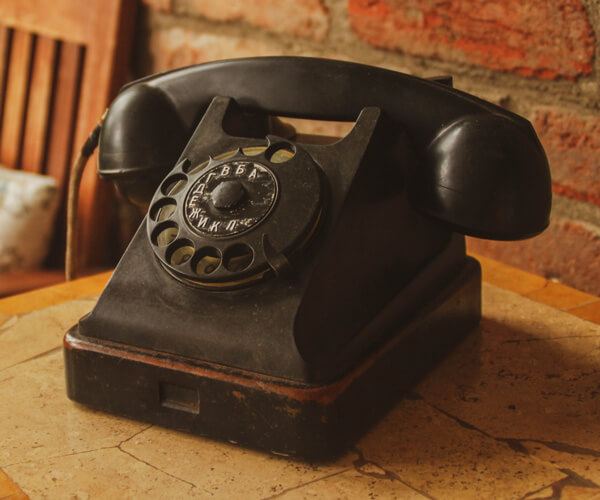
Running your business in 2022 requires a bit of understanding of technology. Even the least technical jobs, such as lawn care professionals, are sporting smart phones to check email, talk to their staff and connect to their clients.
The challenge is that technology can be a bit unnerving for some business owners. It’s not unnerving because it’s technology, per se. It’s unnerving because of the need to understand, yet again, something new.
Social media, blogs, iPhones and Android, search engine optimization, flux capacitors… how do we keep it all straight?
Let me suggest that technology is only a tool. It’s no different than a hammer or drill except it’s a tool that solves a different problem. Until we understand that the technology we use is meant to solve a specific problem, we’ll continue to focus on how hard it is to integrate technology into our business and marketing efforts.
People NOT Social Media
 Social media isn’t a new concept. Connecting online in a social setting has been around since the first public bulletin board system was born on February 16, 1978. It started to really take off around 2010 but has picked up a lot of steam only in recent years.
Social media isn’t a new concept. Connecting online in a social setting has been around since the first public bulletin board system was born on February 16, 1978. It started to really take off around 2010 but has picked up a lot of steam only in recent years.
The problem is forgetting that social media is really about the people. All online bulletin board systems, discussion forums, blog comments, status updates and tweets are about connecting people with people.
Social media is the tool. How do you connect people together is the problem it solves. When we forget that there is a person on the other side of the Tweet, we allow ourselves to no longer use social media as a tool but allow social media to manipulate us.
Story Telling NOT Websites
 Websites are more common now than ever. It’s been a little over 30 years since the first website was published. On August 6, 1991 Tim Berners-Lee, a CERN physicist created the first website. It didn’t take too long before Yahoo, Netscape, AOL and Amazon were part of the daily lexicon.
Websites are more common now than ever. It’s been a little over 30 years since the first website was published. On August 6, 1991 Tim Berners-Lee, a CERN physicist created the first website. It didn’t take too long before Yahoo, Netscape, AOL and Amazon were part of the daily lexicon.
In the beginning, story telling wasn’t as important because only the innovators and early adopters could even access the Web anyway. However, now with billions of websites, competition is fierce to get your message out.
Websites are simple a tool for telling stories. Your story will come in many ways. The best stories are very creative told with picture, graphics and interactivity. But, stories can also be very technical, dry and boring. The better your stories, the more people will come to learn about you.
Consider StoryBrand as a method for telling your story.
Communication NOT Email
 Since the first email was sent in 1971, it has changed the way business is conducted. It’s been nearly 30 years since it really became a mainstay of corporate communication. Unfortunately, email has been an escape from reality for too many business people. It’s becomes a place to hide from the challenges that face us. If we don’t want to talk with someone, we send an email. It allows us to measure our words to the point that we end up being too vague or too rude. To make matters worse, most email writing is poor, at best.
Since the first email was sent in 1971, it has changed the way business is conducted. It’s been nearly 30 years since it really became a mainstay of corporate communication. Unfortunately, email has been an escape from reality for too many business people. It’s becomes a place to hide from the challenges that face us. If we don’t want to talk with someone, we send an email. It allows us to measure our words to the point that we end up being too vague or too rude. To make matters worse, most email writing is poor, at best.
Communication is a two-way street. It takes a listening and a speaking side for communication to happen. Most business people make the mistake of thinking that communication has taken place when the other person is not really paying attention.
Email is simply a tool that helps to facilitate communication. However, it still can not replace a simple conversation via the phone or face-to-face. Even other technological tools, such as video conferencing, can help to facilitate communication more effectively.
Creativity NOT Computers
 In 1984, Apple Computers released the Macintosh and the face of computing hasn’t been the same since. Software has enabled the average computer user accessibility to professional quality tools. Even simple tools such as a word processor or a photo-editing package allow the least adept feel like a pro.
In 1984, Apple Computers released the Macintosh and the face of computing hasn’t been the same since. Software has enabled the average computer user accessibility to professional quality tools. Even simple tools such as a word processor or a photo-editing package allow the least adept feel like a pro.
Computers, in fact, have a tendency to stifle creativity. Leaning on clip-art, copy-and-paste and photographic filters (think Instagram/Tik Tok filters) prevent us from coming up with our own, new ideas. We tend to favor the tools that offer the least resistance to getting our job done.
The result? We generate the same drivel as we’ve done in the past.
Computers are tools. Computers provide us more availability to things that will help us be creative but we have to be careful to not limit our own minds. Sometimes a pen and paper or whiteboard can allow us to be unencumbered in our imagination and then we can take it to the computer when we are ready to put our ideas to work.
Accessibility NOT Smart Phones
 By 1930, land-locked telephone customers could place a call to an ocean liner in the Atlantic Ocean. In the 1990s, texting began to become another effective way of communicating short messages quickly.
By 1930, land-locked telephone customers could place a call to an ocean liner in the Atlantic Ocean. In the 1990s, texting began to become another effective way of communicating short messages quickly.
In 1996, Nokia released the first phone that could be classified a smart phone. In 1997, the term smart phone was made official. With the release of the iPhone in 2007, the smart phone officially became a household term. Now, walking down the street, sitting in a coffee shop or even at church, you see people glued to their phones.
The argument for a smart phone is the ability to be accessible to anyone at anytime. However, it often results in more people playing Wordle and checking their social streams in the middle of a movie instead.
Smarts phones are tools that provide greater accessibility. If you aren’t careful, the very thing that promises greater accessibility could actually prevent it.
Conclusion
These tools are not new. These tools have been around for many years. We seem to think of them as new because they are more shiny now than there were in the beginning. They have become mainstream. They have come to the point where they now mean something to a greater percentage of the population.
Don’t get hung up on the technology but, instead, take the time to understand what the tools are meant to do. If you focus on people, story telling, communication, creativity and accessibility, you’ll find greater success in everything you do.